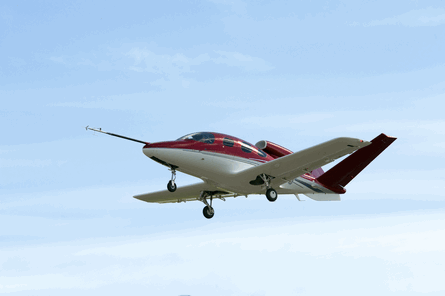US air taxi company Satsair has signed an agreement with Cirrus to purchase five Vision SJ50 personal jets - aircraft that will extend the footprint of the Greenville, South Carolina-based operator of 26 Cirrus SR22 piston singles.
Phil Quist, vice-president of business operations at Satsair, says customers have been asking for longer trips and more payload. The ideal SR22 trip lasts 1-1.5h and covers distances of 370-550km (200-300nm), says Quist. "The jet will be more suited to a 600nm radius with five to six passengers, versus three in the SR22."
Designed to carry as many as six passengers and one pilot, the SJ50 is powered by a Williams International FJ33-4A-19 turbofan and is designed to cruise as high as 25,000ft (7,620m) and as fast as 300kt (555km/h). The first flight took place on 3 July. Initial deliveries, including those to Satsair, are likely in the 2011 timeframe.
 |
|---|
© Cirrus |
In the meantime, Satsair will nearly double its SR22 fleet. The company has firm orders for 24 more aircraft and options on an additional 50. Quist says he expects to take the first two dozen aircraft within two years. "We're seeing a very strong uptake," he says. "There's no doubt there's a demand." Satsair flew more than 16,000 flights to 27 states last year, ending the year with more than 11 million passenger kilometres flown.
The company saw a "shift" last year, it says, from its traditional customer base - those seeking the air cab as a remedy for 2-5h car trips - to having a "significant number of new customers" using the point-to-point whole-aircraft charter service as a solution to hub-and-spoke airline frustrations.
Quist says Satsair "looked at other aircraft, but we're thinking the personal jet is more suitable to our operations". The "big determining factor" in selecting Cirrus's personal jet was that the aircraft "was designed for personal transport first and foremost, meaning single-pilot and single-engine," he says. Key to the single-pilot safety strategy for all Cirrus aircraft, including the SJ50, is its last line of defence. "We wouldn't operate single-pilot without a parachute," says Quist.
Source: Flight International
















